Design of a geographical visualization-based interface for a community academic knowledge exchange
Bridging the existing divide between the members of the DTES community and academic research was the overarching motivation in this research project.
Given that the goal of this research was to improve access for members of the DTES community to research on the DTES, the overarching research question became:
How to best meet user goals and needs while accessing DTES-based research through the design of an interactive geographic visualization-based interface, which;
- offers users an explorative learning experience
- provides location-based resources on DTES-based research
- connects topic-based metadata to location or agency-based research within the DTES
With the members of the DTES community as the primary users, an easily accessible map-based visual interface was planned and designed as an alternative point of entry to the existing Downtown Eastside Research Access Portal (DTES-RAP) to access community-based research.
The research was commenced by conducting a literature review to study the theories of community-based research that corresponded to the goals of the research. Here, journal articles dealing with aspects of community engagement, cultural sensitivity, geographic visualization, community mapping, searching as learning were among those that were studied. Following this study, textual analysis and data collection/analysis was done using software such as Voyant and MS Excel on journal articles about the DTES that were available through the DTES-RAP, to bring out locational references and main topic areas addressed in each study. An iterative design-based approach with stages such as empathize, define, ideate, prototype, and test, was adopted. The resulting connections between organizations, authors, and topics were represented in a map-based visual interface, designed to promote learning through exploration.
Screenshots of the pages of the interface are shown as below.
Home page
Organizations page
An example of interaction within the organizations page is shown below.

Topics page
An example of an interaction within the Topics page is shown below.

Authors page
An example of an interaction within the 'Authors' page is shown below.
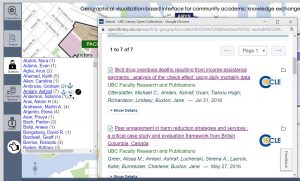
Community spaces page
An example of interaction within the 'Community spaces' page is shown below.
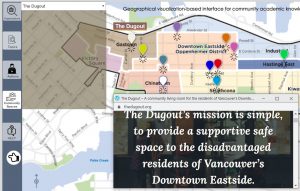
Help page
A few examples of interactions within the 'Help' page are shown below.

Following the prototyping stage, a pilot study of the interactive version of the interface was conducted with graduate students of the University of British Columbia. On receiving the approval of the UBC Behavioural Research Ethics Board, a small-scale usability study was conducted with the members of the DTES community to evaluate the current design and identify areas for improvement. Some conclusions have been drawn and recommendations made based on the knowledge gained through this study.
The link to my thesis in cIRcle (which is UBC's digital repository for research and teaching materials) is available here http://hdl.handle.net/2429/71522.
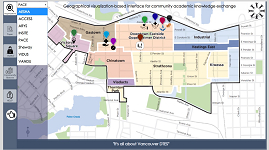
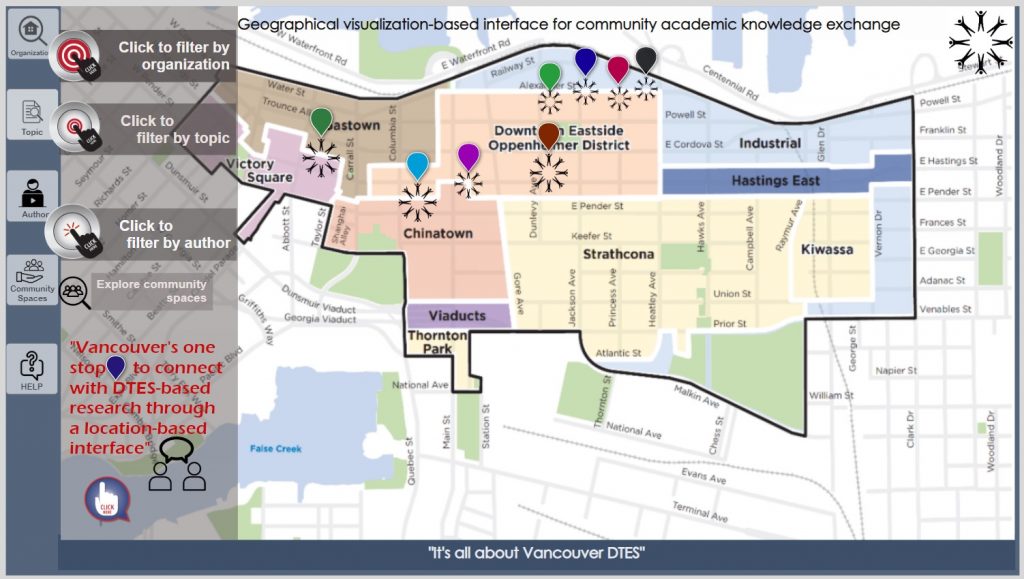
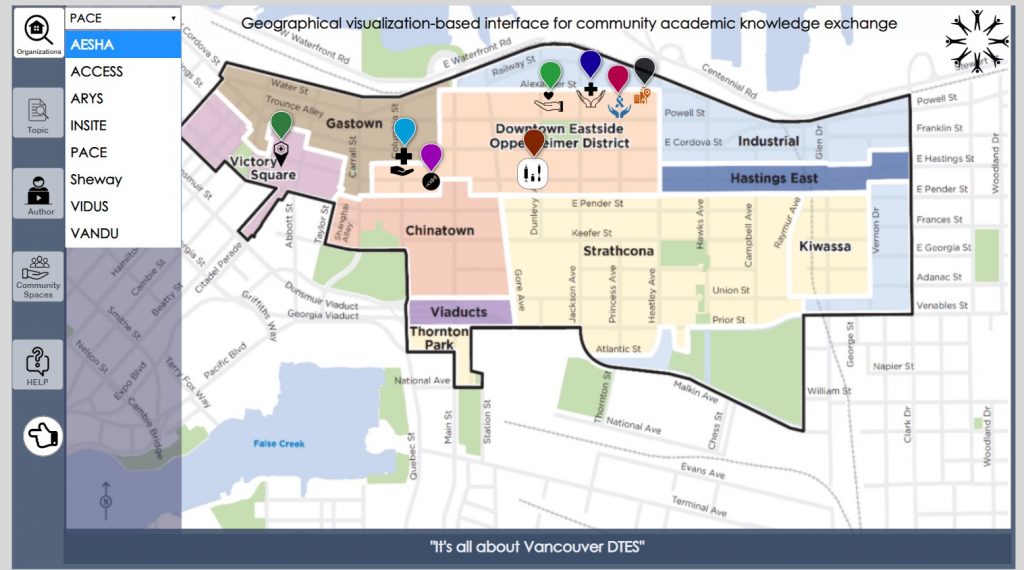
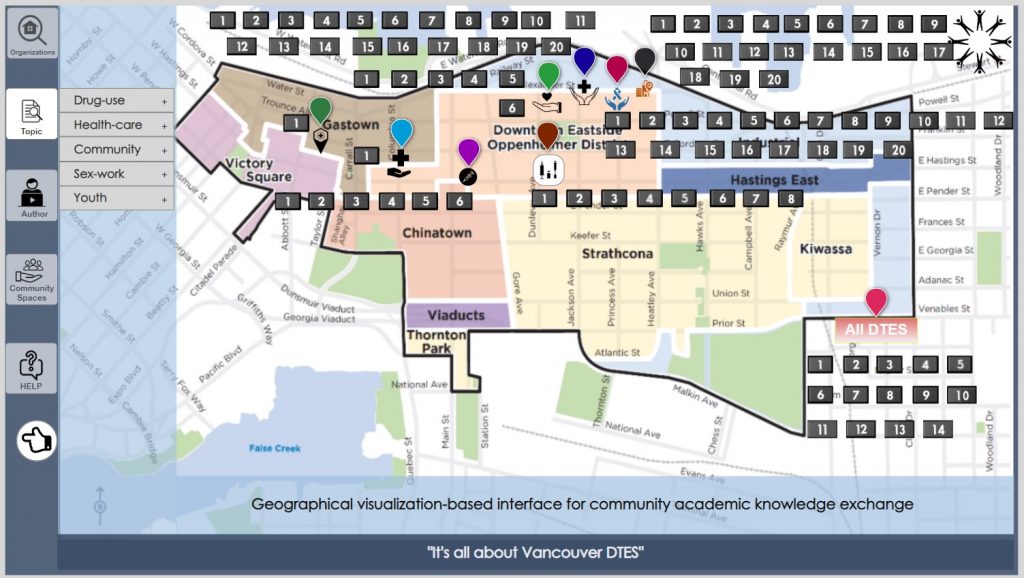

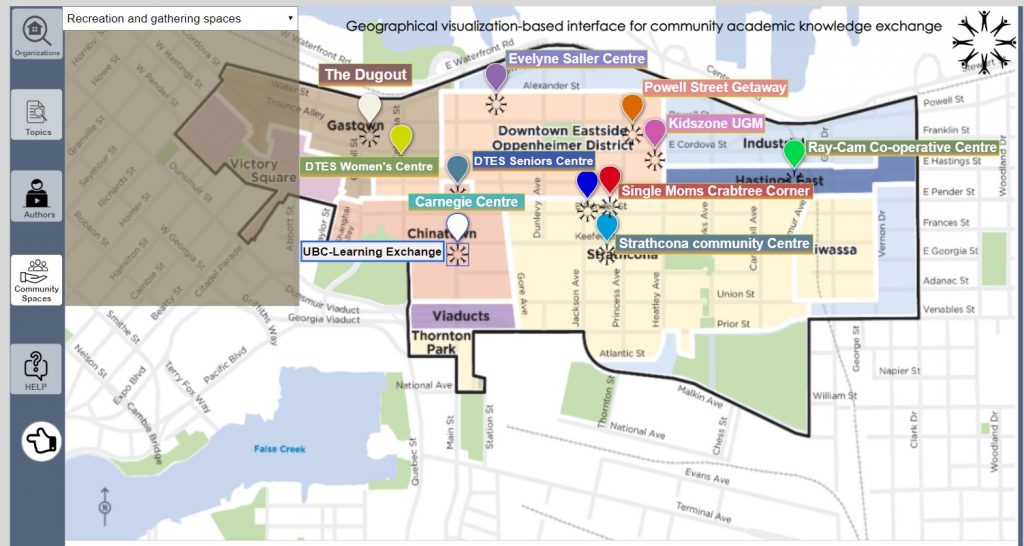

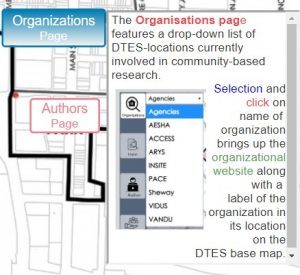
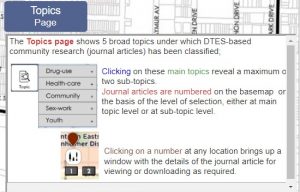
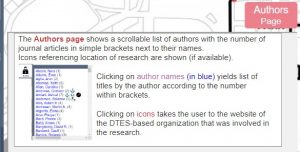
Working on this research project offered learning opportunities through challenges encountered at every stage. Arriving at the original research question following an extensive literature review including articles on DTES-community-based research was the initial challenge. The second challenge was to identify and connect location-based metadata with topics and sub-topics of DTES-based research through manual and software-based textual analysis. The third challenge was to integrate the research question with the design of the prototype while overcoming the limitations of the prototyping software. The fourth challenge was to design and execute user study to meet the requirements of the research question. The fifth and final challenge was to consolidate the results of the user study to arrive at meaningful findings and conclusions. Through these challenges, understanding has been gained on benefits of critical literature review, textual analysis of literature, iterative design thinking procedures and the integral value of user input in key stages of research.